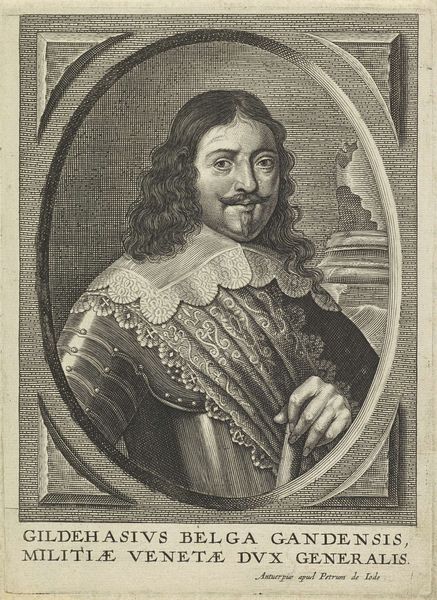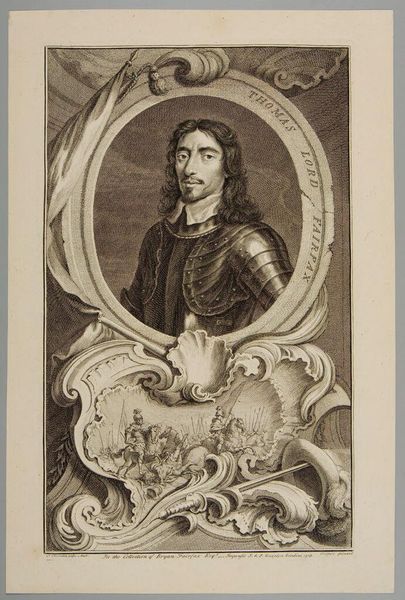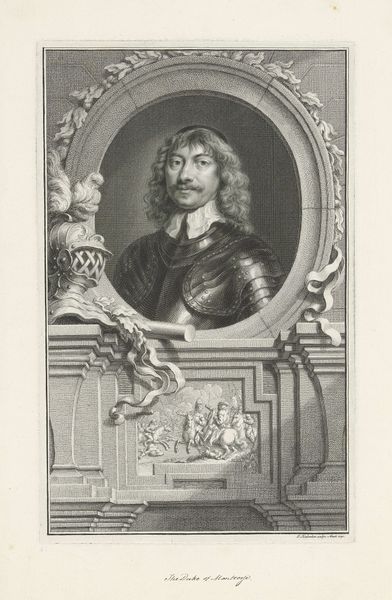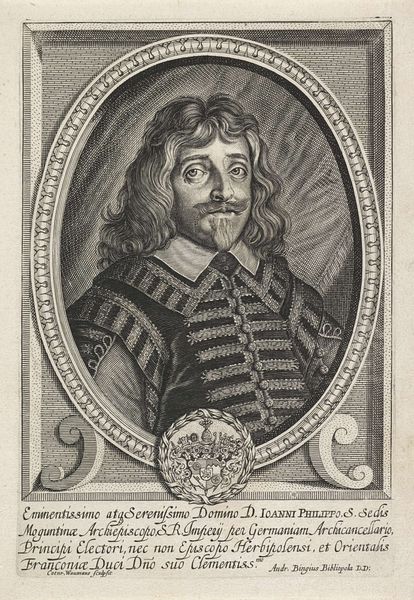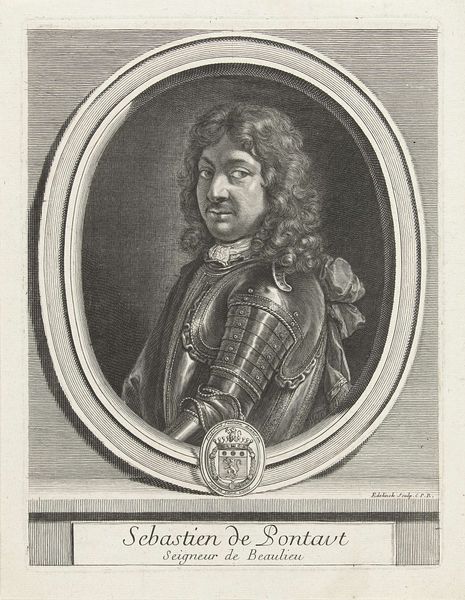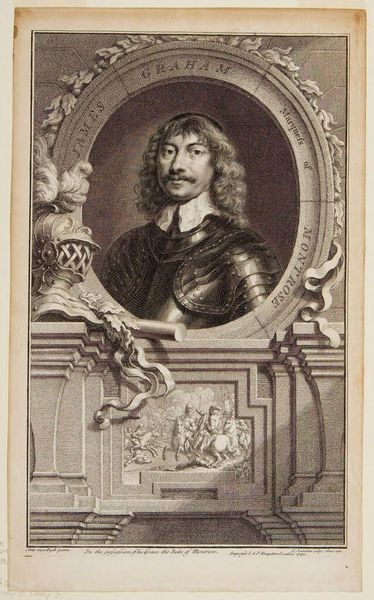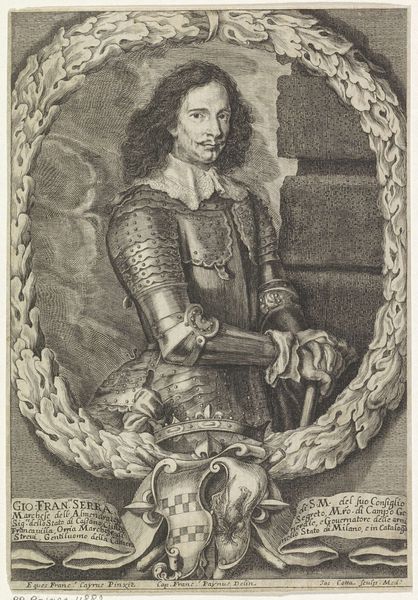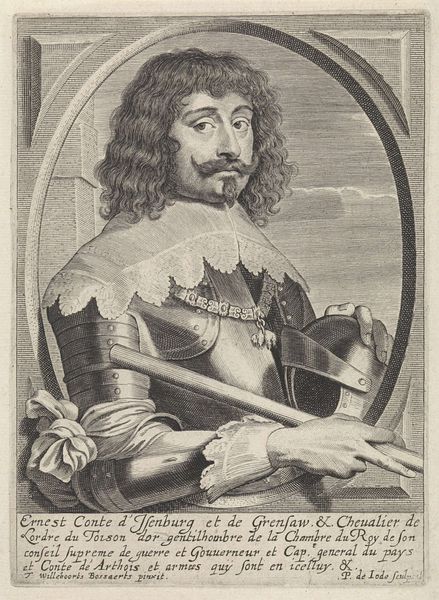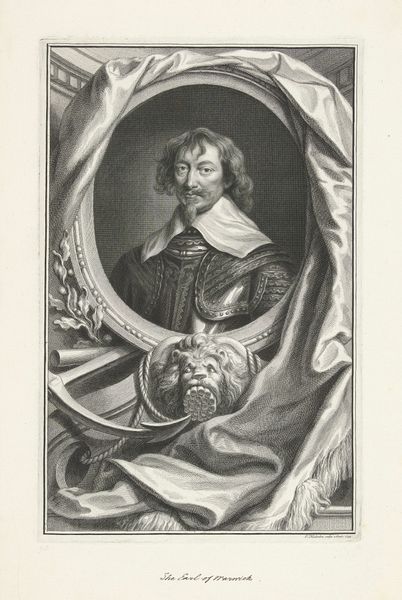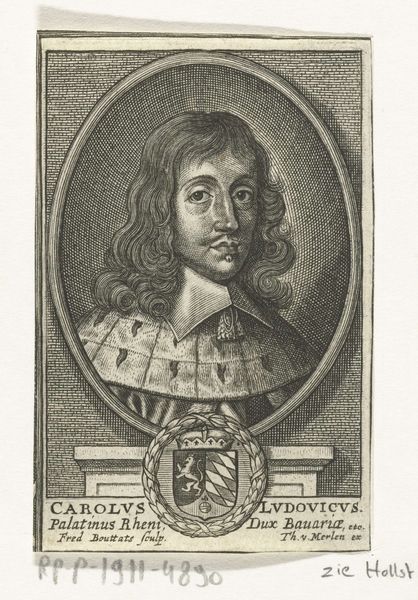
engraving
#
portrait
#
baroque
#
limited contrast and shading
#
portrait drawing
#
engraving
Dimensions: height 367 mm, width 228 mm
Copyright: Rijks Museum: Open Domain
Editor: This is "Portrait of Thomas Fairfax," an engraving from between 1736 and 1738, by Jacob Houbraken. The portrait itself has an intense quality, like he’s sizing you up, but there's a battle scene beneath the portrait... what do you make of the juxtaposition here? Curator: The battle scene is not just decorative; it functions as a kind of visual emblem, associating Fairfax with military leadership and valor. The armor, the gaze, and the swirling combat imagery coalesce to present Fairfax as an ideal of martial authority. Note how the oval frame almost acts like a shield itself. It invites the viewer to delve deeper, exploring what these recurring images tell us about that period. What emotions are stirred in you by the combination of these symbols of power? Editor: It feels deliberate, the layering of symbols like you pointed out, constructing a narrative. Does the limited contrast of the engraving style amplify that sense, almost muting the raw reality of war and glorifying power? Curator: Precisely! The monochrome and controlled lines allow the image to become more of an idea, a memory, rather than a visceral depiction. It smooths over the edges, helping transform the earthly figure of Fairfax into a timeless paragon of leadership. Have you noticed how different cultures use similar visual strategies to exalt authority? Editor: That's really fascinating! Seeing it this way reveals the constructed nature of even seemingly straightforward portraits. It is not only about the individual but also about the values projected onto them. Curator: Exactly! So, by examining those layers of symbols and understanding their original contexts, we discover a new way to understanding of this figure’s cultural impact. Editor: It does make me wonder about the difference between who he really was and how he was intending to be seen by history, I never thought about portraiture as cultural memory before!
Comments
No comments
Be the first to comment and join the conversation on the ultimate creative platform.
